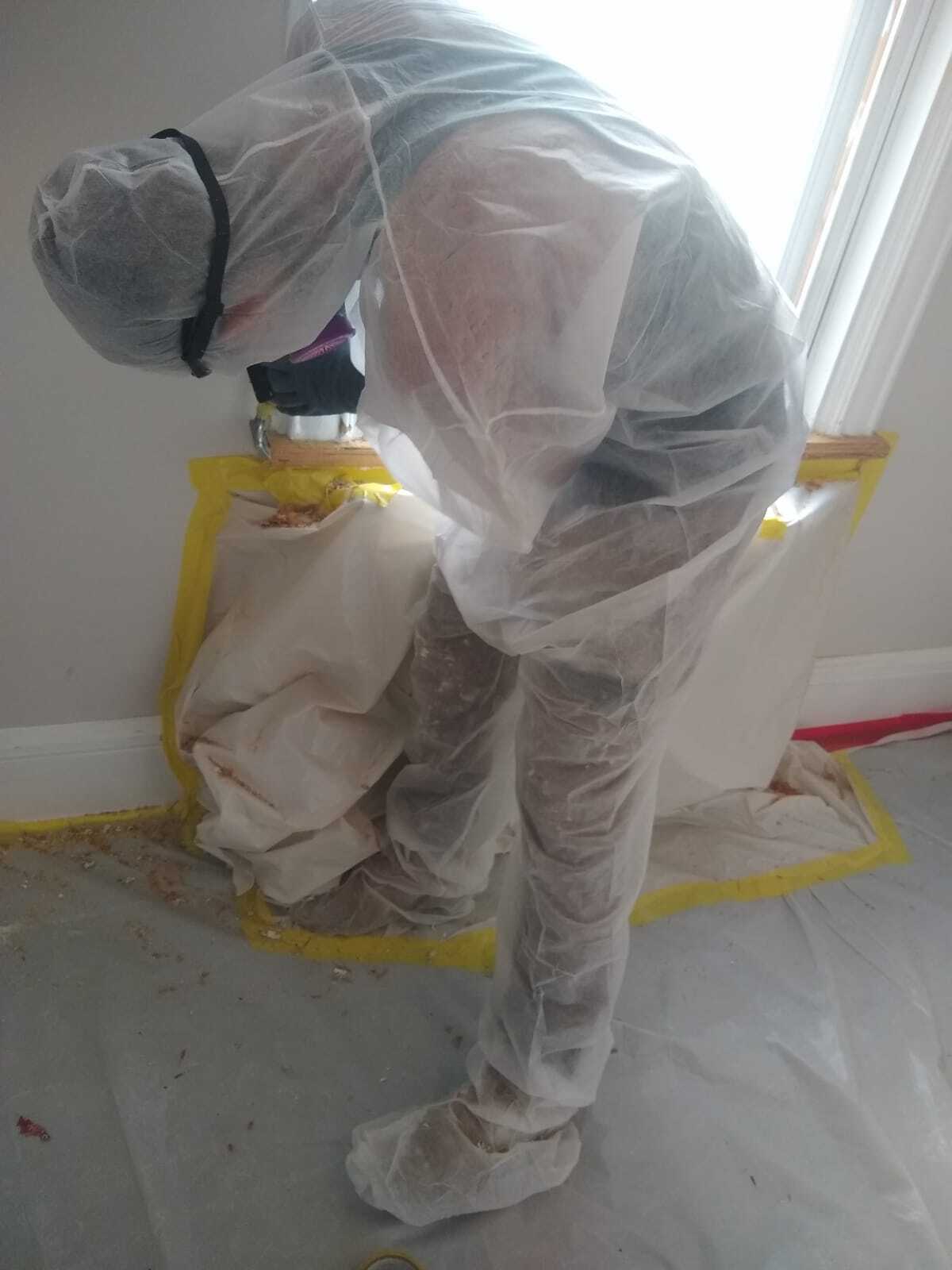Comprehensive Lead Paint Removal Service in NYC-- Accredited and Licensed
Comprehensive Lead Paint Removal Service in NYC-- Accredited and Licensed
Blog Article
Best Practices for Ensuring Safe and Thorough Lead Offense Reduction
Dealing with lead infraction abatement needs a multi-faceted strategy to guarantee both safety and security and conformity. It's the last clearance procedure, involving detailed examinations and lab testing, that really verifies a lead-free environment, making certain long-term safety. Just how do these techniques adjoin to assure comprehensive lead abatement?

Initial Evaluation
Performing a preliminary analysis is an important initial action in lead infraction abatement. This phase encompasses an in-depth evaluation of the residential property to determine the visibility, extent, and certain places of lead-based dangers. Certified experts, such as certified lead assessors or take the chance of assessors, must carry out an extensive website examination, utilizing devices like X-ray fluorescence (XRF) analyzers to properly identify and measure lead concentrations in paint, dust, soil, and water.
The evaluation should likewise include a review of the building's background, previous reports, and any kind of problems or health and wellness problems reported by occupants - Lead Removal Contractors. Recording the searchings for carefully is vital, as these documents create the basis for developing an effective abatement method. A complete evaluation additionally involves tasting and lab analysis, which are essential to verify the existence of lead and overview subsequent activities
In addition, it is necessary to communicate the outcomes transparently to all stakeholders, including property owners, renters, and governing authorities. By making certain that the first assessment is performed with precision and roughness, experts can lay a solid structure for a targeted and efficient lead abatement process, inevitably protecting public health and wellness and guaranteeing conformity with regulative criteria.
Appropriate Control
Proper containment is important to avoid the spread of lead contaminants during reduction tasks. Efficiently managing containment reduces the threat of lead dirt and debris moving to non-work areas, thus securing both the atmosphere and people outside the instant work area.

Normal inspections of the control area are needed to inspect for violations or weaknesses in the barrier. Any kind of identified concerns must be quickly resolved to keep the honesty of the containment. By adhering to these practices, reduction projects can effectively regulate lead contamination and alleviate associated health dangers.
Worker Defense
Guaranteeing worker protection is vital during lead abatement projects to stop work exposure to hazardous lead particles. Vital actions consist of the usage of individual safety equipment (PPE) such as respirators, handwear covers, and full-body matches especially designed to obstruct lead dirt and fumes. Workers need to undergo comprehensive training on the correct use and maintenance of PPE, including fit testing for respirators to ensure optimum efficiency.
Design controls, such as neighborhood exhaust air flow systems, are critical in reducing air-borne lead focus in the job atmosphere. Administrative controls should likewise be applied, consisting of limiting the duration of exposure and turning workers to minimize specific direct exposure times. Normal medical monitoring and organic monitoring are indispensable for very early detection of lead absorption, making it possible for timely intervention and therapy.
Furthermore, developing a decontamination protocol is important. Employees have to adhere to rigid purification treatments prior to breaks and at the end of their shift to stop lead dirt from being lugged outside the workspace. This consists of extensive hand and face washing with lead-specific cleaner and transforming out of infected clothing.
Meticulous Clean-up
Keeping a safe workplace expands beyond employee defense and incorporates meticulous clean-up to make certain lead bits are completely gotten rid of from the site. The procedure of meticulous cleaning is vital in protecting against the recontamination of the eased off location and securing both existing and future occupants.
To achieve a thorough clean-up, all work areas should be systematically sanitized. This includes making click use of specialized HEPA (High-Efficiency Particulate Air) vacuum cleaner cleaners and wet-wiping strategies to catch and eliminate great lead dust that might have decided on surface areas. It is vital to cleanse all horizontal surface areas, including floors, home window sills, and kitchen counters, as well as vertical surface areas that might have caught lead bits.
Workers should wear proper individual protective tools (PPE) during clean-up to stay clear of exposure to residual lead dirt. Made use of cleaning materials such as wipes, sponges, and wipe heads should be taken care of based on contaminated materials disposal regulations.

Final Clearance
Last clearance is the important concluding stage of lead abatement that establishes whether the site is secure for reoccupation. This crucial action involves thorough evaluation and testing to verify that all lead risks have been efficiently eliminated.

Final clearance testing not only secures future owners yet likewise makes sure conformity with local, state, and government policies. Moreover, it functions as a recorded recognition of the reduction contractor's adherence to market finest techniques. Guaranteeing an extensive and successful final clearance is necessary in guarding public wellness and fostering depend on in the abatement procedure.
Conclusion
Ensuring safe and extensive lead violation reduction requires a diverse technique click here to read encompassing preliminary analyses with sophisticated discovery methods, efficient control strategies, stringent employee protection procedures, and meticulous cleaning treatments. The final clearance stage, including comprehensive evaluations and laboratory testing, is crucial to validate compliance with EPA criteria. Adherence to these finest practices ensures a risk-free setting for residents, alleviates health threats, and upholds linked here governing requirements, therefore promoting public health and wellness and safety in lead-affected areas.
Report this page